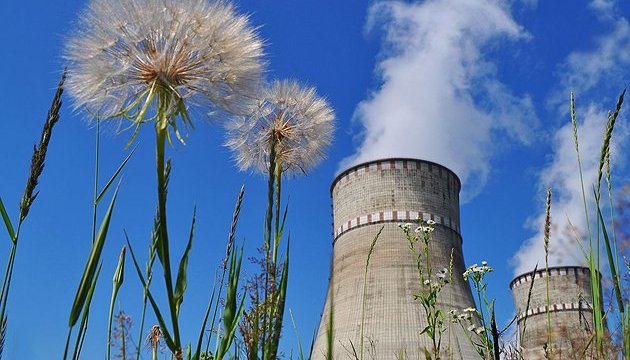УДК 577.41/:577.391 • Issue 7 (35) / 2022 • 18-23 pages
O. Shevchenko, V. Perekheida
Shevchenko O.L., D.Sc. (Geol.), Сhief researcher, Ukrainian Hydrometeorological Institute NAS of Ukraine, ORCID 0000-0002-5791 -5354, shevch62@gmail.com
Perekheida V.V., PhD, Аssist., Institute of Philology Taras Shevchenko National University, 9915264@ukr.net
Abstract
The evolution of views on measures to protect the environment from the effects of human development of the subsoil and terrestrial natural environment is reflected in the tasks and methods of environmental control. The current nature of change, especially climate change, requires a shift to regional and global research and forecasting. However, the local and departmental differentiation of the monitoring network do not allow to make assessments of the regional level, and conclusions and forecasts – of the global. Water is the component of the environment that connects all spheres of the Earth, it is a universal solvent, transporter and accumulator of matter and energy. In order to ensure regional and global levels of monitoring, assessments should be carried out on a basin basis, and the subject of research should be the ways, processes and factors of migration of substances, which are based on the peculiarities of moisture balance formation. These principles are fully justified in the performance of various tasks: the definition of barrier functions of the environment in relation to different pollutants; determining the response of the pool hydraulic system to economic activity; assessment of the resistance of soil-plant complexes to the accumulation of toxic substances; assessment of the resistance of basins to hydrological and hydrogeological drought depending on landscape conditions, etc. The paper considers the general methodology and some results obtained through the application of landscape-basin approach to determining the barrier resistance of basins to radio strontium in the Chernobyl Exclusion Zone. For this purpose, the data of 20 years of observations on the removal of 90Sr from catchments were analyzed. It was possible to assess the degree of dependence of 90Sr removal and barrier stability on landscape factors, and to establish the time of active transition of 90Sr to mobile forms, the sequence of dominance of the processes of secondary pollution of surface waters and much more. The use of the obtained regression dependences helped to fulfil retrospective and prognostic tasks, as well as to model more favourable conditions in the catchments to reduce 90Sr removal by adjusting certain factors.
Key words: words: monitoring, catchments, radionuclides, groundwater, landscape, the barrier stability of basins, radioecological assessment.
Article
Reference
1. Albulescu A-C., Minea, I.,, Boicu, D., Larion, D. (2022), Comparative Multi-Criteria Assessment of Hydrological Vulnerability–Case Study: Drainage Basins in the Northeast Region of Romania. Water.14. 1302. https://doi.org/10.3390/w14081302
2. Chao, N., Luo, Z., Wang, Z., Jin, T. (2018), Retrieving Groundwater Depletion and Drought in the Tigris‐Euphrates Basin Between 2003 and 2015. Groundwater, Vol. 56. 5. 770-782.
https://doi.org/10.1111/gwat.12611
3. Chen, X., Wang, D., Chopra, M.. (2013), Constructing Comprehensive Datasets for Understanding Human and Climate Change Impacts on Hydrologic Cycle. Irrigat Drainage Sys Eng.,
2, 1: 106. doi:10.4172/2168-9768.1000106
4. Forootan, E., Safari, A., Mostafaie, A., Schumacher, M., Delavar, M., Awange, J.L. (2016), Large-scale total water storage and water flux changes over the arid and semiarid parts of the Middle East from GRACE and reanalysisproducts. Surveys in Geophysics, 38: 591 – 615. https://doi.org/10.1007/s10712-016-9403-
5. Germenchuk, M.G., Zhuravkov, V.V. (2022), Retrospectivnaya otcenka i modelirovanie radioaktivnogo zagryazneniya territorii respubliki Belarus’ v rezul’tate katastrofy na Chernobyl’skoy AES. Zjurnal Beloruskogo gosudarstvennogo universiteta. Ekologiya, 1: 56-67. https://journals.bsu.by/index.php/ecology/article/view/4792
6. Joodaki, G., Wahr, J., Swenson, S. (2014), Estimating the human contribution to groundwater depletion in the Middle East, from GRACE data, land surface models, and well observations. Water Resources Research, 50: 2679 – 2692
7. Longuevergne, L., Wilson, C.R., Scanlon, B.R., Cr ́etaux, J.F. (2013), GRACE water storage estimates for the Middle Eastand other regions with significant reservoir and lake storage. Hydrology and Earth System Sciences. 17: 4817 – 4830. https://doi.org/10.5194/hess-17-4817-201
8. Milly P.C.D., Betancourt J, Falkenmark M, Hirsch R.M., Kundzewicz, Z.W. et al. (2008), Stationarity is dead: Whither water management? Science, 319: 573-574.
9. Shevchenko, O.L. Estimation of biogeochemical barrier functions of catchments by means of statistical methods. (2015) Natural water resources of the Carpathian region. Problems of protection and rational use: 14th International science-pract. conf. (May 28-29, 2015, Lviv), Lviv: 188-191.
10. Shevchenko, O.L., Akinfiev G.O. Generalization of factors for the involvement of radionuclides in water migration. Geochemistry of Technogenesis, 2020, № 3(31), P. 41-52. https://doi.org/ 10.15407/geotech2020.31.041
11. Shevchenko, O., Dolin, V. Methodological principles and main indicators of radiation monitoring of the environment. Geochemistry of Technogenesis, 2019, 2(30): 70-83. https://doi.org/10.15407/ geotech2019.30.070
12. Shumlyanskyi, V., Makarenko, M., Kolyabina, I. et al. (2007), Monitoring of the natural environment after uranium mining by underground leaching. Kyiv: Logos: 1-212.
13. Vörösmarty, C.J., Green, P., Salisbury, J., Lammers, R.B. (2000), Global water resources: Vulnerability from climate change and population growth. Science, 289: 284–288.
14. Wouters, B., Bonin, J., Chambers, D., Riva, R., Sasgen, I., Wahr, J. (2014), GRACE, time-varying gravity, earth system dynamics and climate change. Reports on Progress in
